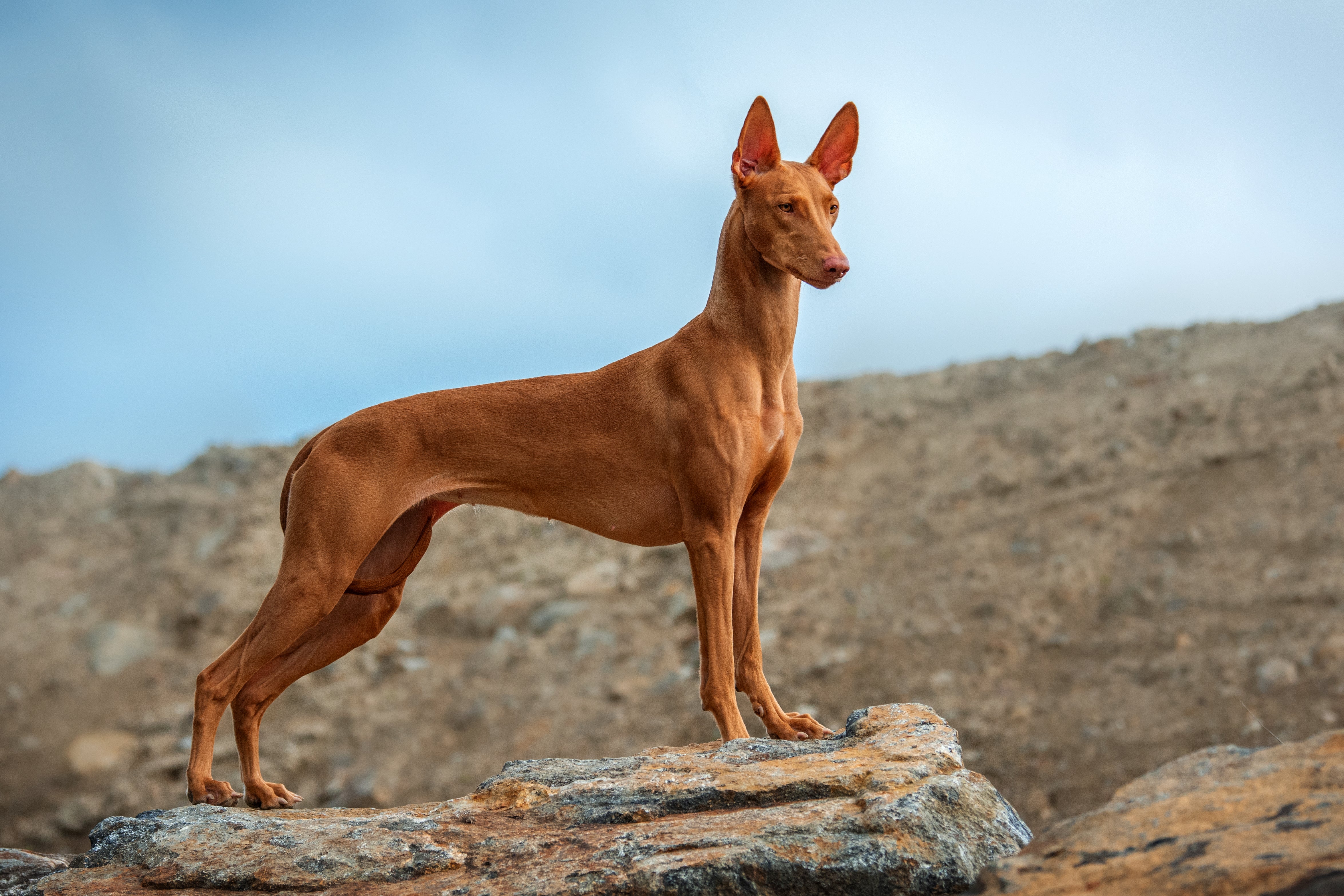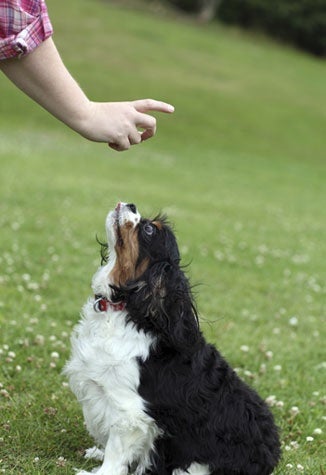Pharaoh Hound
The Pharaoh Hound might be as old as 3,000 years, depicted on the tombs of Egyptian Pharaohs and in Greek art. These sighthounds have a greyhound-like build, striking red coats, and endurance for days. They “blush” when excited; their noses and ears lack black pigment and can get brighter red.
Breed characteristics carousel
Learn More
Need to Know
- Dog suitable for owners with some experience
- Extra training required
- Generally healthy breed
- Enjoys vigorous walks
- Medium dog
- Minimal drool
- Requires occasional grooming
- Quiet dog
- Barks and alerts to visitors/anything unusual
- Generally friendly with other dogs
- May need additional training to live with other pets
- May need additional supervision to live with children
- Needs a large yard, in suburban or rural areas
- Can be left alone occasionally with training
- AKC Registered Breed

Personality
Svelte and gentle, the Pharaoh Hound dog is calm indoors but will grab the proverbial bull by the horns and run when given the chance to expend energy outside. They have chasing instincts that will need to be worked on through training, and given the dog’s somewhat stubborn personality, it might take a few attempts. They can be timid with strangers but are eager to please their owners.
Perhaps one of the most ancient breeds that first appeared over 3,000 years ago, the Pharaoh Hound, or a dog like it, was depicted on the tombs of Egyptian pharaohs, hence their names. They were also found in Greek art. They flourished as rabbit dogs in the Mediterranean islands after being brought from Greece by Phoenician traders and are the national dogs of Malta. The dog was hidden away on the island of Malta in relative obscurity for many years before being rediscovered and brought to America in the mid-20th century.
Owners with sighthound experience are ideal for the Pharaoh Hound, as someone who can help them channel their hunting instincts into productive outlets. A large, very secure yard—they can jump up to 6 feet in the air—is ideal, as is a keep-at-it approach to training. They are slow to mature, meaning they might not be obedient the first, second, or third time trying.
Pharaoh Hound dogs are athletic and love sprinting in quick bursts. They also love long-distance running, jumping, and any athletic feat. Variety is the spice of life when it comes to their exercise. However, they don’t love the cold or wet weather, so a coat or sweater might be necessary for them during the winter months.
Outdoor space for a Pharaoh Hound requires a fence that’s at least 6 feet tall, as these dogs are known to jump. They enjoy lots of variety in their walks and adore running off-leash. They can be vocal and vigilant watchdogs, and thanks to their hearing, they might be alerting night and day. It’s best to be in a suburban or rural home where close neighbors won’t hear their opinions quite so acutely.
The Pharaoh Hound is easy to groom with a rubber mitt, which will remove loose or dead hairs.
Pharaoh Hound dogs enjoy training. They’ll need to be socialized early and often, be taught how to walk on a leash, and how to have good recall, although it can’t always be relied upon. They could also enjoy heelwork, canine sports, agility training, and more. If left to their own devices without proper energy release, these active dogs will create their own fun in the form of destruction.
Training and stimulating a Pharaoh Hound can require a lot of time and energy. They are slow to mature, which might not be a fit for households with small children or who are short on time. They do best with older children or no children.
The cost of a Pharaoh Hound from a breeder is significantly more than the cost of adopting one from a local shelter or rescue. The adoption fee usually covers additional items such as spaying or neutering, vaccines, and microchipping.

Learn more about feeding and caring for your Pharaoh Hound on Purina.
Did You Know?
- The Pharaoh Hound “blushes” when excited. Their noses and ears will “glow” red because they lack black pigment.
- Pharaoh Hound dogs can be trained to “smile.”
- The Pharaoh Hound dog’s pointy ears stand up around 4 weeks old.

